A tremendously diverse and beautiful variety of multicellular marine algae are collectively called ‘seaweed’. Often they are grouped into red, brown or green species, but these are not rigid distinctions.
Seaweeds require enough light to photosynthesise, so are most abundant in the intertidal, or littoral, zone – especially along rocky shores, which offer plenty of secure attachment points. They are extraordinarily tough, having adapted to survive being exposed and submerged by the tides. Some species have gas-filled sacs and float in surface waters, sometimes far out to sea.
For centuries, seaweeds have been harvested for food – several of the dozen species pictured here are edible (and delicious). Foraging ‘sea greens’ is great fun, but watch the tides and take care to collect them away from any potential sources of pollution.
The colonisation of British shores by introduced seaweeds, such as wireweed and wakame (Japanese kelp), is causing concern for native biodiversity. So if you spot any aliens, report your finds to the Big Seaweed Search to help biologists track their spread.
Learn more about seaweeds and rockpools:
All illustrations by Dan Cole / The Art Agency
Purple laver (Porphyra umbilicalis)
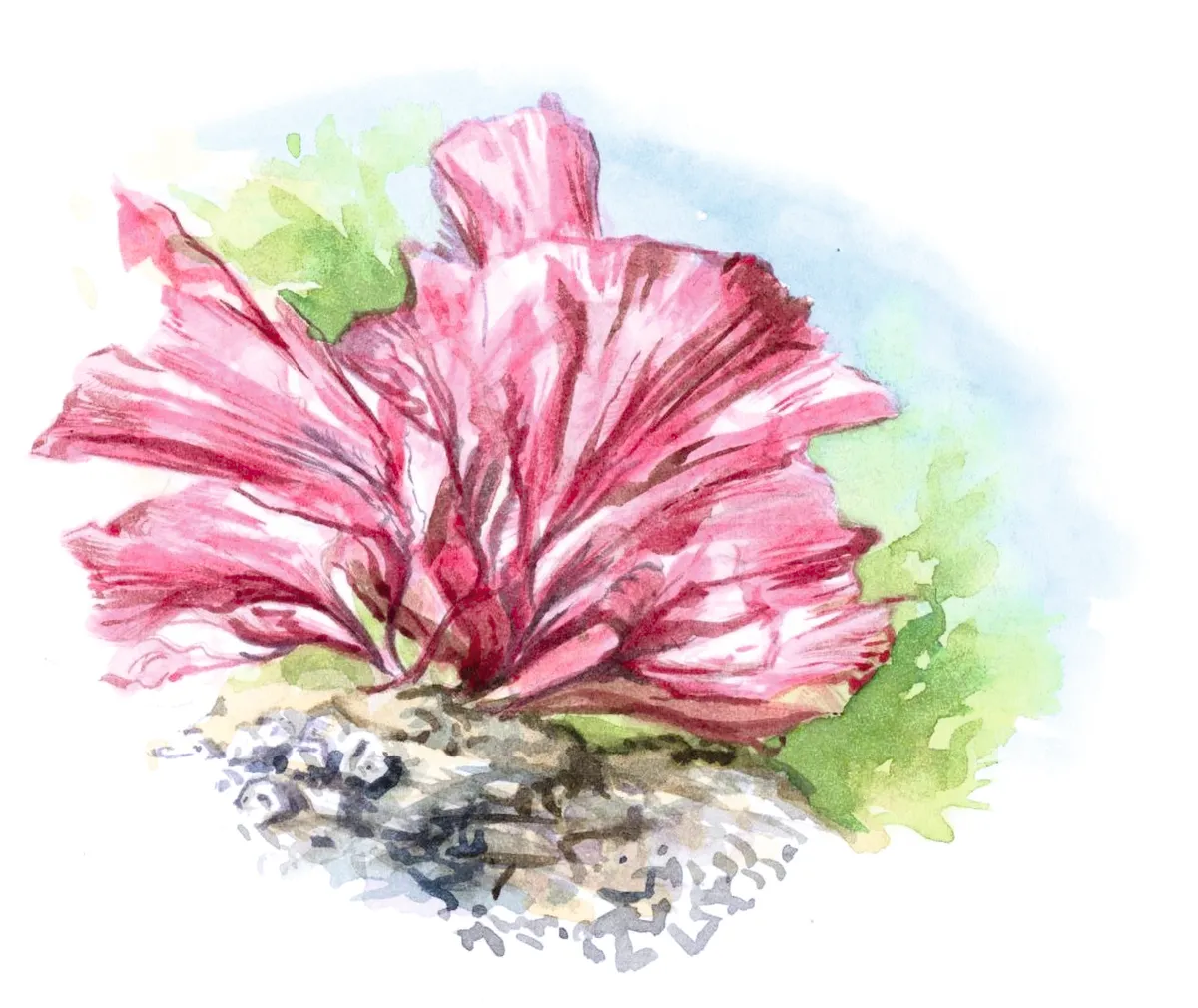
Small and purple, with broad, tough fronds. Found in upper zone of rocky shores. Edible; eaten as laver bread.
Oarweed (Laminaria digitata)
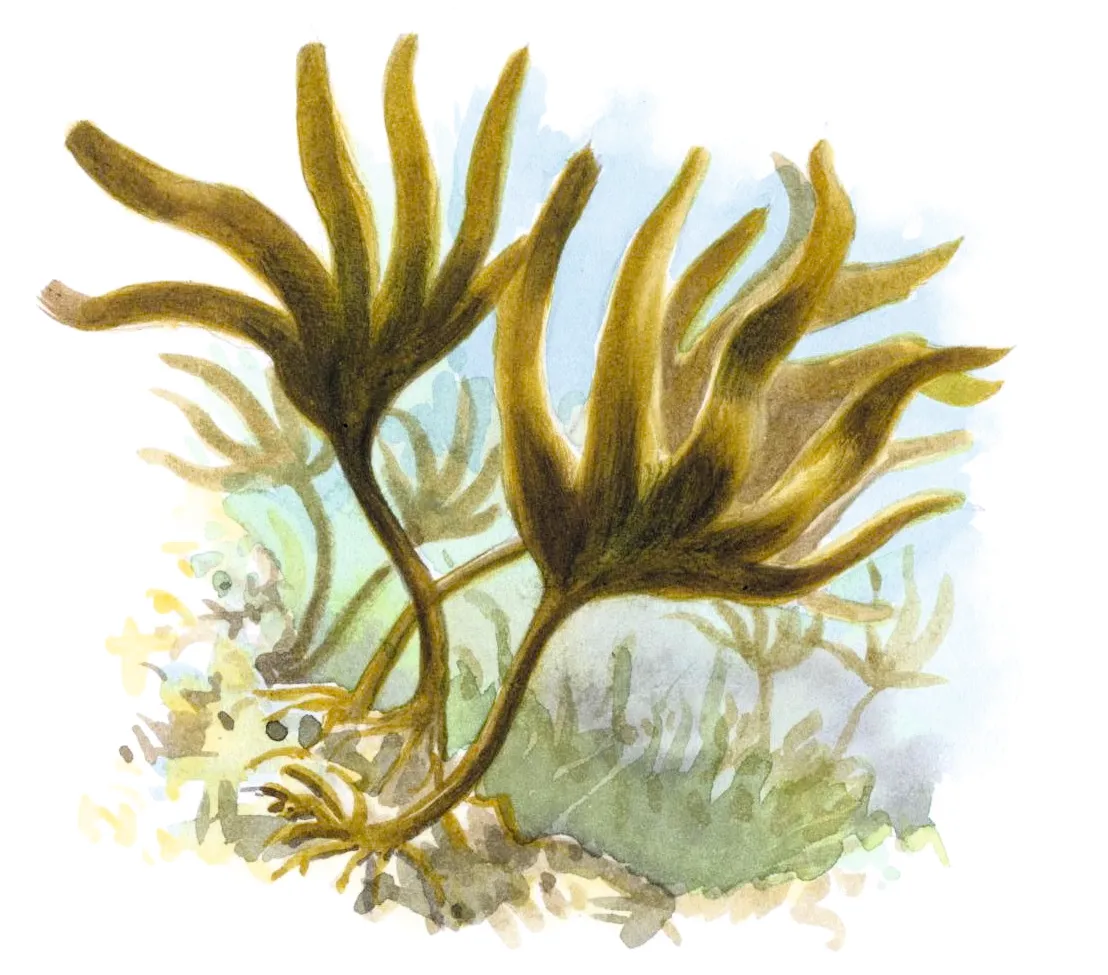
A glossy, golden-brown kelp up to 2m long, with distinctive ‘fingers’ on broad fronds. Exposed at low tide.
Furbelows (Saccorhiza polyschides)
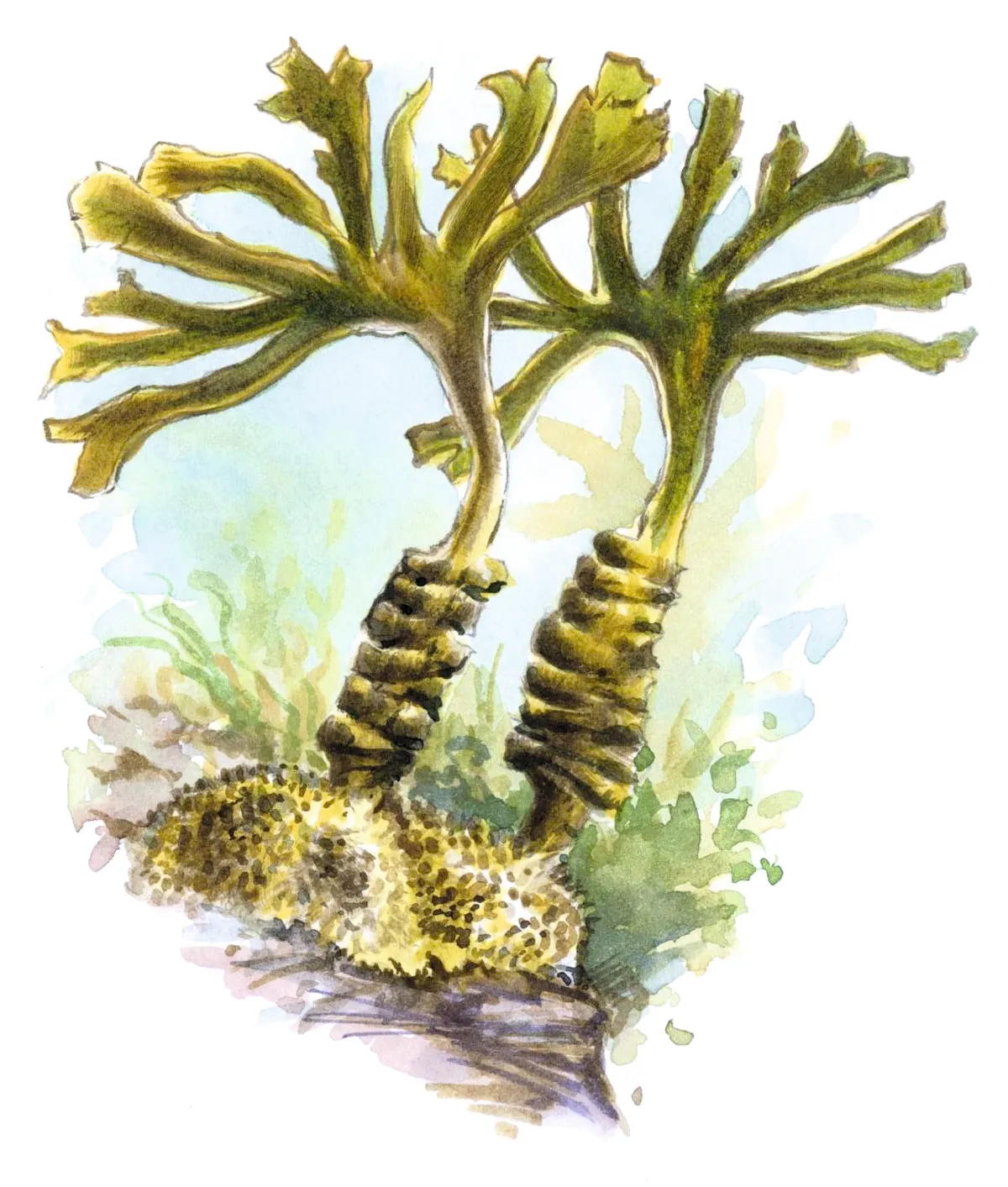
A brown kelp with a frilled stem and large bulbous holdfast that attaches to rocks. Revealed at low spring tides.
Bladderwrack (Fucus vesiculosus)
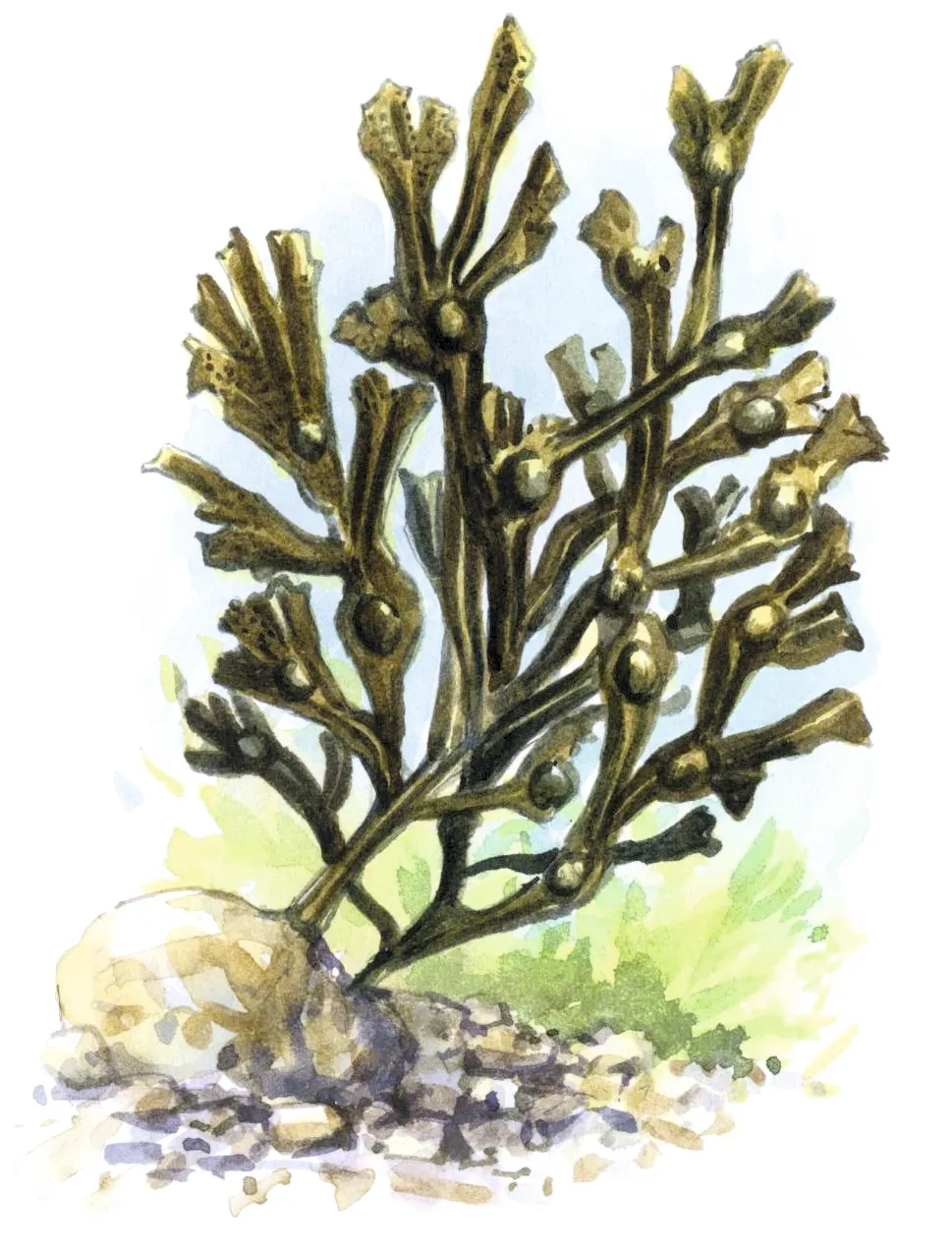
Olive-brown and up to 2m long, with air bladders at the frond ends. Forms beds in mid-zone of rocky shores.
Channelled wrack (Pelvetia canaliculata)
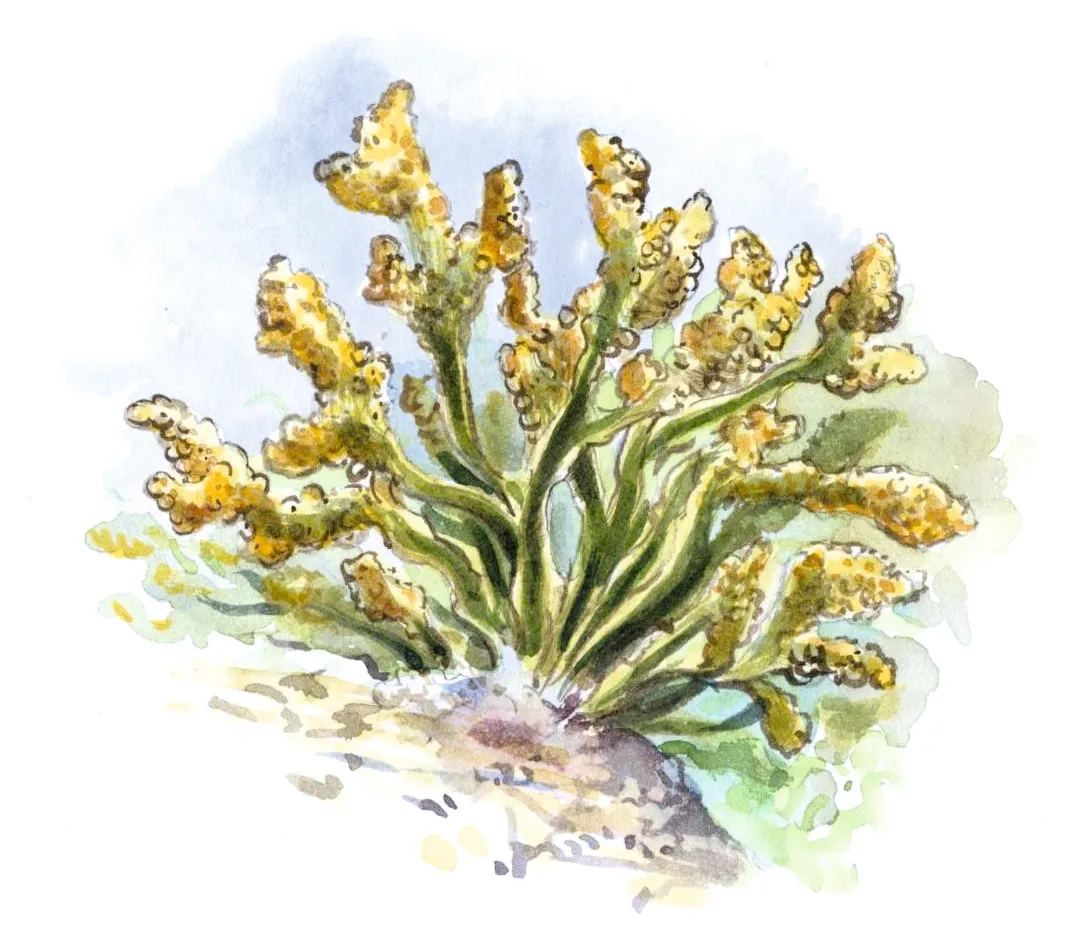
Brown and up to 15cm long, with fronds that curve inwards to create a channel. Found at top of the shore.
Pepper dulse (Osmundea pinnatifida)

Small, red or brown, fern-shaped seaweed of sheltered rocky coves. Edible; used as a curry-like spice.
Coral weed (Corallina officinalis)
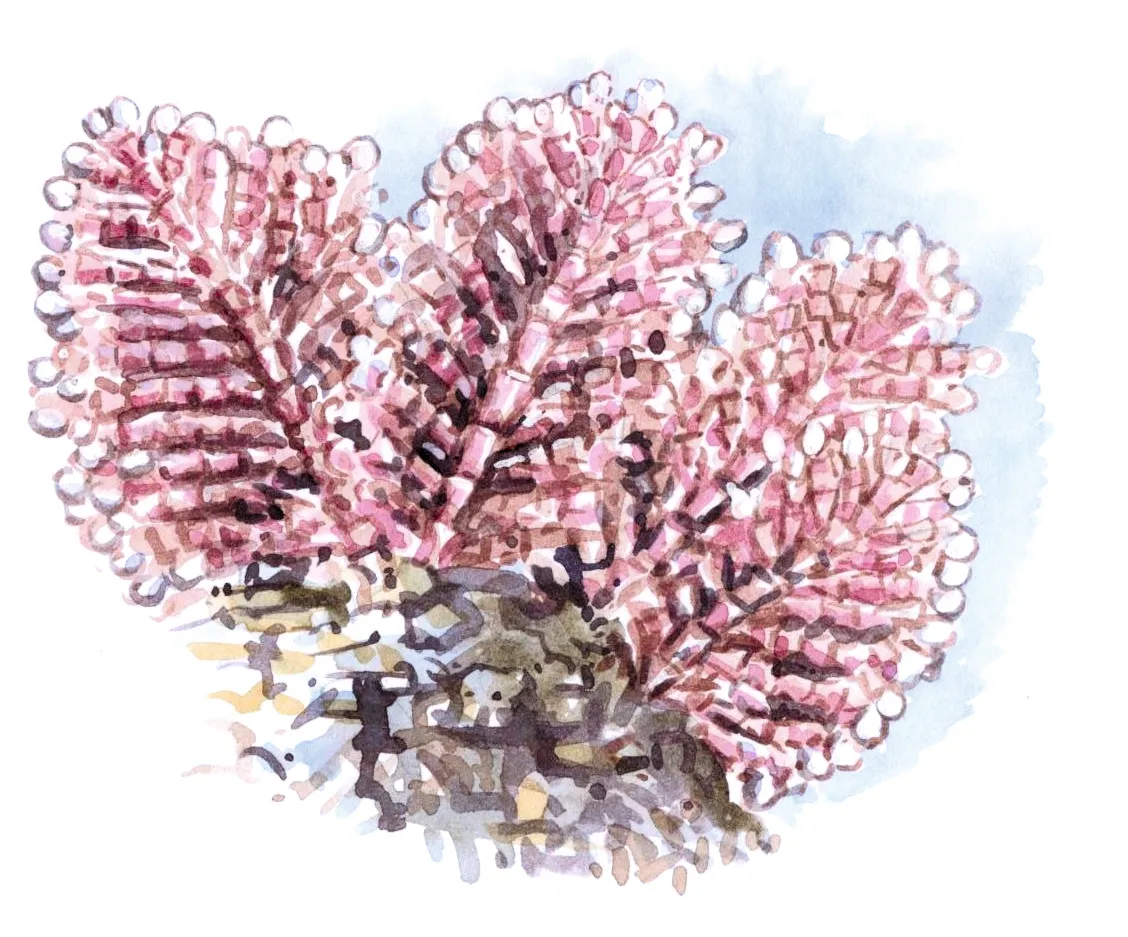
Small, pink or purple seaweed with a feathery structure. Forms a dense carpet in pools on rocky shores.
Carrageen (Chondrus crispus)

Purple, with flat fronds up to 20cm long. Found on rocks on lower shore. Edible; used as a thickening agent.
Sugar kelp (Saccharina latissima)
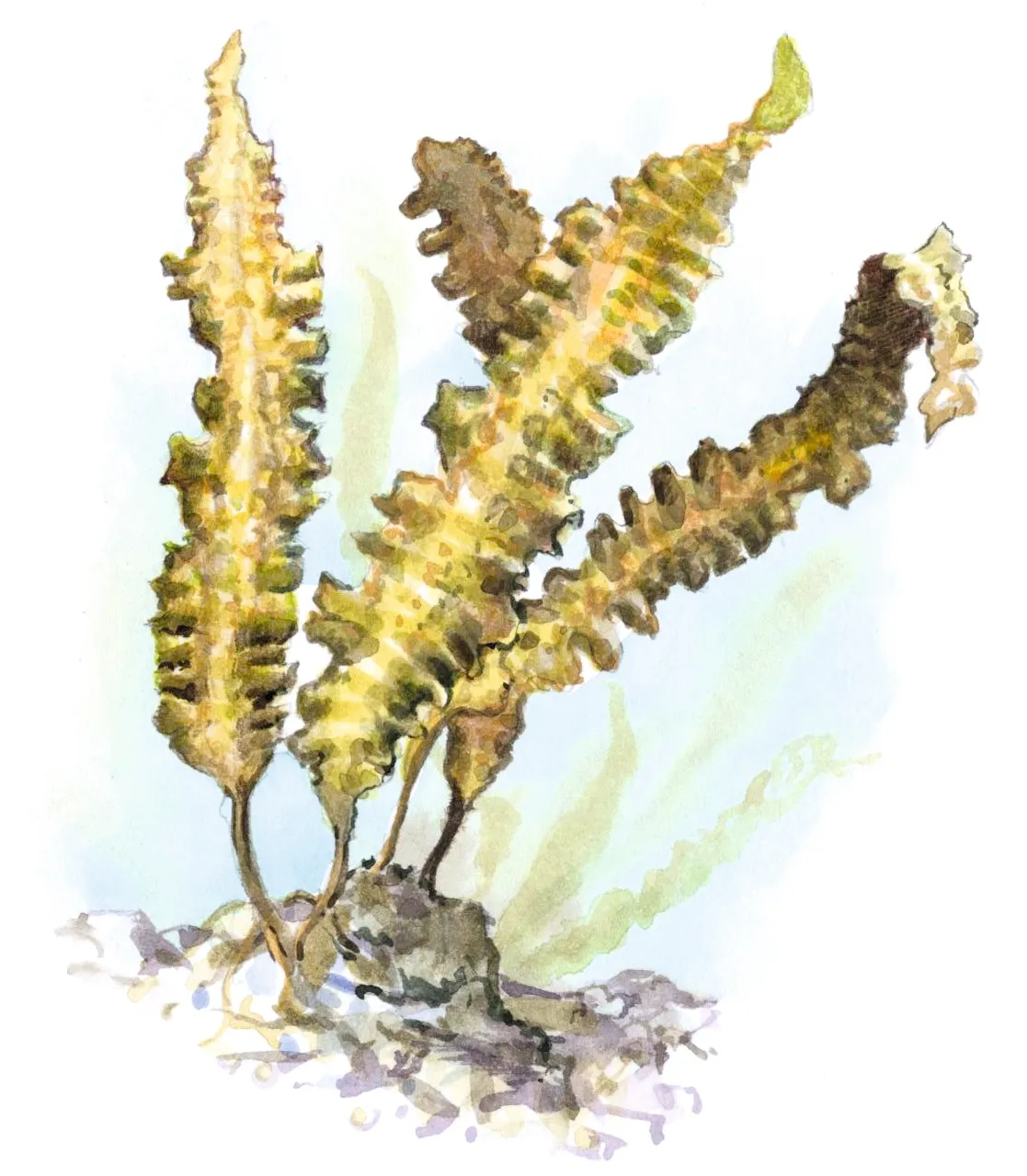
A brown kelp up to 2m long, with frilly fronds. Found below low-tide mark. Edible; used as a sugar substitute.
Gut weed (Enteromorpha intestinalis)
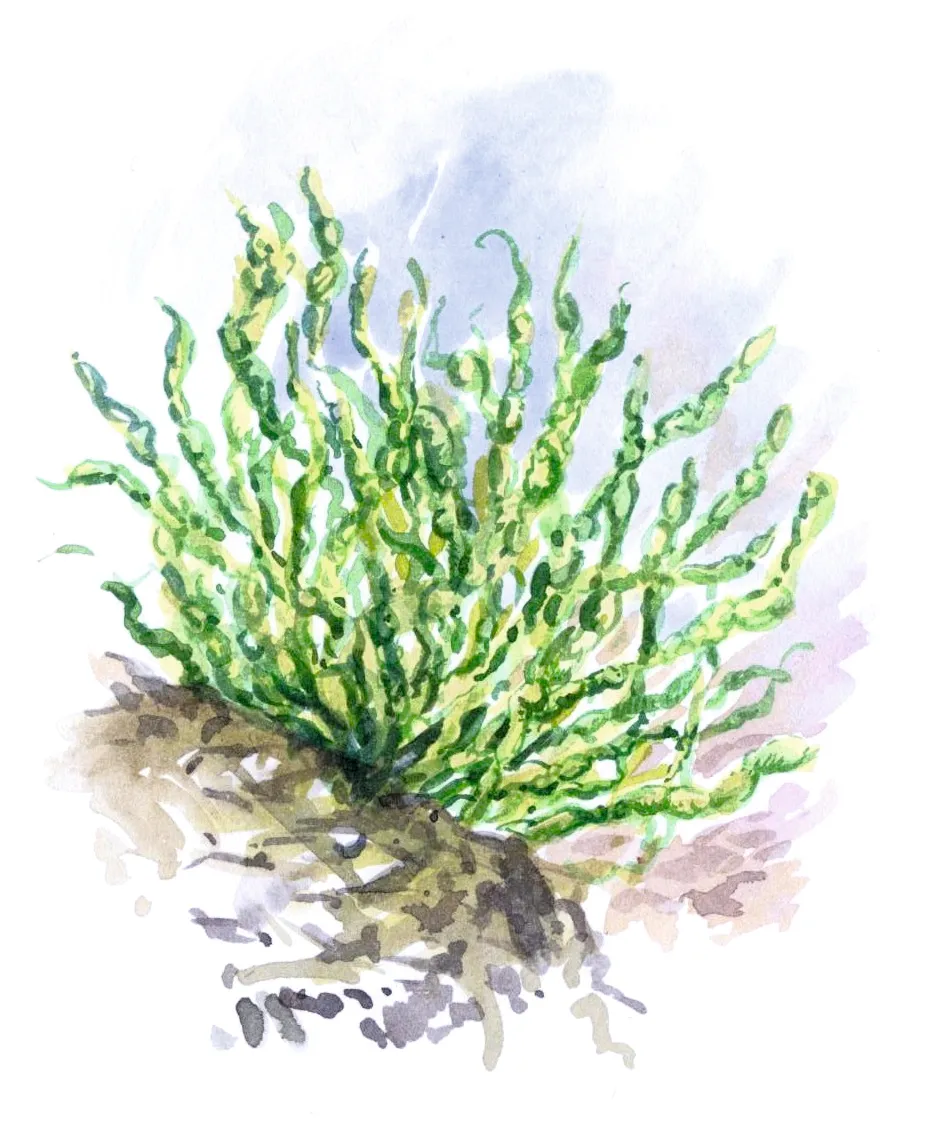
Green, grass-like seaweed with tubular fronds. Found on rocks, sand or mud at all levels of the shore.
Velvet horn (Codium tomentosum)

Green seaweed with spongy texture resembling deer antler ‘velvet’. Found in rockpools and on lower shore.
Sea lettuce (Ulva lactuca)

Small and green, with crumpled, lettuce-like fronds. Grows on rocks in mid-zone of shores. Edible.
Main image: Bladderwrack. © Olga Mironova/Getty




